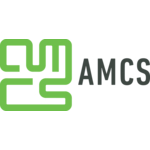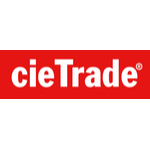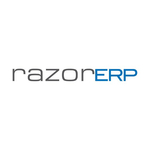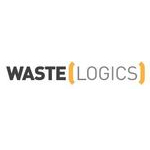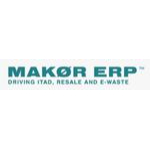List of Best Recycling Software
Showing 10 of 11 productsAMCS is a leading software used by businesses of all sizes to streamline their operations and manage their resources efficiently. With its user-friendly interface and powerful features, AMCS helps companies increase productivity, reduce costs, and im...Read AMCS Reviews
BuyBack Pro SQL is a and innovative software designed for assisting businesses in managing their buyback and trade-in processes seamlessly. With its advanced features and user-friendly interface, BuyBack Pro SQL is the perfect solution for streamlini...Read BuyBack Pro SQL Reviews
Box Tracker is a solution for efficient and organized tracking of your packages and deliveries. With its user-friendly interface, real-time updates, features, Box Tracker is the go-to software for keeping track of all your shipments. Say goodbye to c...Read Box Tracker Reviews
cieTrade is a software platform designed to streamline and optimize every aspect of your trading operations. From managing inventory and logistics to facilitating secure transactions and providing intelligent insights, cieTrade empowers businesses to...Read cieTrade Reviews
CycleLution is revolutionizing the way businesses manage their operations with its innovative software. With a user-friendly interface features, CycleLution streamlines processes and maximizes efficiency. With its easy accessibility and powerful tool...Read CycleLution Reviews
Nexus is a software designed to streamline your business processes and increase productivity. With its user-friendly interface features, Nexus simplifies complex tasks and empowers your team to work smarter, faster, and more efficiently. Say goodbye...Read NEXUS Reviews
Are you looking for a top-notch business management solution? Look no further than RazorERP. This powerful software simplifies and streamlines your day-to-day business operations, helping you increase efficiency and productivity. Say goodbye to juggl...Read RazorERP Reviews
Scrap Dragon Xtreme is an innovative and powerful software that revolutionizes the scrap metal industry. With its efficient and user-friendly features, managing your scrap yard has never been easier. From inventory management to sales tracking, Scrap...Read Scrap Dragon Xtreme Reviews
Waste Logics is a waste management software that streamlines and simplifies the waste management process for businesses of all sizes. Designed to optimize efficiency and reduce costs, Waste Logics offers an innovative solution to handling waste, maki...Read Waste Logics Reviews
Makor ERP is a solution designed to streamline business processes and boost efficiency. This software provides a seamless integration of key operations, allowing businesses to stay organized and stay ahead of the competition. Say hello to Makor ERP a...Read Makor ERP Reviews
- What Is Recycling Software?
- Top Reasons Why Businesses Need Recycling Software?
- What Are the Top Key Features of Recycling Software?
- What Are the Top Benefits of Recycling Software?
- What Are the Steps to Choose the Right Recycling Software?
- What Are the Types of Recycling Software for Different Industries?
- What Are the Technology Trends for Best Recycling Software?
- What Are the Deployment Options for Recycling Software?
What Is Recycling Software?
Recycling software refers to computer software designed to enhance the operational efficiency and efficacy of enterprises in managing their recycled resources, hence facilitating a reduction in their environmental footprint. This particular software solution facilitates the optimization of waste management procedures within an organization, enabling the efficient and secure recycling of resources.
The utilization of recycling management software in corporate settings has the potential to significantly mitigate the accumulation of waste in landfills, as well as facilitate the efficient preparation of resources for subsequent reuse or repurposing.
These programs have the capability to provide guidance to staff in the process of sorting and preparing items for recycling. Additionally, they are able to monitor and record trash quantities, ensure compliance with regulations, and offer other related functionalities.
Furthermore, certain recy software possess functionalities that facilitate the inclusion of recyclables in accounting processes and the computation of landfill diversion rates.
In general, the utilization of the best recycling software enables firms to achieve cost savings, diminish their ecological footprint, and effectively handle their waste materials.
Top Reasons Why Businesses Need Recycling Software?
1. One potential solution is to enhance the precision and effectiveness of waste volume tracking and monitoring.
2. One potential recycling management software to mitigate the burden of manual work is the implementation of automation techniques to streamline and mechanize repetitive tasks.
3. Identify potential cost-saving opportunities through precise study of waste management systems.
4. One can expedite the creation of tailored reports in order to make precise judgments based on facts.
5. One potential approach to fostering sustainability is through implementing more effective waste management practices.
6. Optimize recycling procedures, such as the logging and analysis stages, to enhance efficiency and effectiveness.
7. Generate real-time updates by aggregating data from different sources.
8. One potential area for enhancement is the optimization of operational efficiency and the reduction of administrative expenditures.
9. Enable precise waste pricing and allocation of financial resources. 10. Facilitate enhanced adherence to environmental regulations.
11. Conduct regular assessments of contractor performance.
12. Develop comprehensive documentation outlining waste management procedures.
13. One potential avenue for enhancing the traceability of waste materials involves promoting transparency in data management.
14. The objective is to identify potential cost reductions and enhance the efficiency of pickup routes for recycling services.
15. One potential approach to improve the current state of waste management is to increase the accessibility and transparency of waste data, while also implementing mechanisms to monitor and evaluate progress towards achieving sustainability goals.
What Are the Top Key Features of Recycling Software?
1. Automated Recycling Workflows: The implementation of automated recycling workflows allows firms to optimize their recycling procedures and monitor recycling activities to enhance operational efficiency and ensure accountability.
2. Waste Stream Tracking: The utilization of recycling software facilitates the monitoring of diverse waste streams and the effective management of waste inventory, thereby ensuring the adherence to environmental requirements regarding appropriate disposal practices.
3. Reporting and Analytics: The inclusion of reporting and analytics functionalities inside recycling software enables users to conduct an in-depth analysis of the effects of their recycling endeavors, hence facilitating the measurement of progress and the formulation of more economically efficient plans.
4. Recycling Bin Management: The utilization of recycling software facilitates the monitoring of recycling bin whereabouts and conditions, so streamlining the process of maintenance and servicing to ensure their sustained functionality.
5. Integration With Other Software: The integration of recycling management software with other company programs, such as accounting and CRM, facilitates enhanced coordination and interchange of information.
6. Data Security: The recy software incorporates data security measures to guarantee the protection and confidentiality of all recycling and waste management-related information.
7. Automated Notifications: Automated notifications enable users to receive timely information regarding any modifications or enhancements to the software, thereby ensuring their continuous awareness of the most recent upgrades.
8. Multi-Location Functionality: The utilization of recycling software facilitates the monitoring and administration of many sites, hence enhancing operational management and ensuring adherence to regulatory requirements for organizations.
What Are the Top Benefits of Recycling Software?
1. Reduced manufacturing cost: The utilization of recycling software facilitates the mitigation of manufacturing and development expenses through the repurposing of pre-existing code, components, templates, and libraries.
2.Improved product quality: The utilization of recycled software code enables enterprises to mitigate testing expenses while concurrently enhancing product quality.
3.Increased code safety: The best recycling software components are frequently deemed more secure than manually developed code due to their prior testing and certification.
4.Faster development time: Development teams can achieve time and energy efficiency by adopting the practice of reusing and recycling software code and components.
5. Increased customer satisfaction: The process of the best recycling software systems code can contribute to heightened customer satisfaction by enabling the expedited implementation of additional functionality.
6.Increased profits: The utilization of recycling management software has the potential to enhance profitability through the mitigation of expenses associated with development and labor.
What Are the Steps to Choose the Right Recycling Software?
1. Identify Your Needs – Firstly, recy software is vital to contemplate one's individual requirements. Are you in need of software that provides assistance for a diverse range of services, including but not limited to collection and transportation, data analysis, and reporting? Identify the salient elements that hold the utmost significance in accordance with your particular requirements.
2. Research Potential Options – After determining one's specific requirements, it is advisable to conduct thorough research and make comparisons among various recycling software options that align with those defined needs. It is advisable to seek out vendors who possess a strong reputation and a proven history of success.
3. Decide on Delivery Method – The installation of software can be conducted either on-site or remotely through hosting. It is advisable to evaluate the advantages and disadvantages associated with each available alternative. It is imperative to ensure that the vendor provides any requisite tailored services to facilitate the establishment and operation of your system.
4. Evaluate Your Budget – Recycling software systems is imperative to develop a comprehensive budget for the software acquisition process, ensuring that the selected vendor aligns with the predetermined financial constraints.
5. Test It Out – Prior to making a software purchase, recyclist software is advisable to avail oneself of the opportunity to utilize free trial versions and demos. Utilize the given chance to evaluate the performance and ascertain its compliance with the specified criteria.
6. Assess Maintenance and Support – Recy software is imperative to ensure that the seller offers post-installation upgrades and technical support.
7. Finalize Decision – After conducting thorough research, conducting tests, and evaluating the various possibilities, recyclist software is advisable to make a final decision and proceed with purchasing the software that aligns most effectively with your specific requirements.
What Are the Types of Recycling Software for Different Industries?
The purpose of recycling software is to facilitate the management and monitoring of recycling initiatives inside enterprises and organizations. A diverse range of recyclist software options exists, which can be tailored to meet the specific requirements of a certain firm or organization.
1. Manufacturing and Industrial Recycling Software - Recycling software solutions is specifically tailored for implementation in manufacturing facilities, foundries, and other industrial environments. The utilization of this system facilitates the monitoring of production materials and waste, alongside the assessment of recycling endeavors.
2. Waste Management Software - The purpose of recycling software systems is to monitor and quantify the quantity and nature of trash produced within commercial enterprises or institutions, together with the initiatives undertaken to mitigate its generation.
3. Textile Recycling Software - Recy software is specifically tailored to cater to organizations operating within the textile industry or retail sectors. The system monitors the constituents employed in the production of goods, together with the measures implemented to recycle textile waste.
4. Construction and Building Recycling Software - Recyclist software is specifically developed to cater to the needs of the construction and building sectors. The utilization of this tool facilitates the monitoring and quantification of material consumption in building activities, alongside the analysis of waste decomposition and diversion initiatives.
5. Household Recycling Software - Recycling software solutions is specifically developed to assist homes in minimizing waste production and effectively monitor and oversee their recycling endeavors.
6. Municipal and Public Recycling Software - Recycling software systems is specifically developed to cater to the needs of public organizations and municipal governments, enabling them to effectively monitor and evaluate their recycling initiatives.
What Are the Technology Trends for Best Recycling Software?
The current technology advances in recycling software encompass the incorporation of the Internet of Things (IoT) and machine learning to facilitate sophisticated automation of the recycling process.
The utilization of Internet of Things (IoT) enabled devices, such as sensors, presents an opportunity to employ scanning technology for the purpose of categorizing materials based on their respective types and levels of recyclability. The utilization of machine learning algorithms enables the prediction of recycling patterns and the identification and processing of objects, hence facilitating the provision of advanced automation.
In addition, recycling software systemsis imperative for the software to incorporate various capabilities, including route optimization, to enhance the efficacy of waste collection and recycling networks in terms of route design.
Moreover, recycling software solutions is imperative to integrate data analytics into waste management procedures to enable organizations to acquire valuable insights. Ultimately, it is imperative for the program to include effective data storage mechanisms in order to adequately accommodate the substantial volumes of data.
What Are the Deployment Options for Recycling Software?
The implementation of recycling software can be achieved through multiple methods. The following are among the most widely favored choices.
1. On-premise deployment: This process entails the installation of the software within the internal network of an organization. The implementation of software on-premise provides enterprises with a greater level of control and enables them to tailor and expand the program according to their own needs.
Nevertheless, the implementation of a recyclist software may necessitate a more substantial allocation of initial resources and could potentially present various technological obstacles.
2. Cloud-based deployment: Recycling software solutions enable enterprises to remotely access the program without necessitating substantial initial expenses. It is a highly advantageous choice for firms that prioritize efficiency and cost-effectiveness.
Furthermore, due to the utilization of cloud hosting, these software systems are very manageable and amenable to regular maintenance and updates.
3. Hybrid deployment: Recycling software solutions entails a combination of deploying the program on-premise and utilizing cloud-based deployment. The selection process may be influenced by individual needs, tastes, and considerations of cost-effectiveness.
Organizations possess the agency to strategically select the most optimal amalgamation for their company operations, so enabling them to effectively harness the advantages offered by both deployment types.
When deploying recycling software, it is crucial to take into account scalability, security, and dependability, regardless of the chosen deployment mode. Through the process of analyzing and selecting the most optimal solution for the company, it may effectively guarantee the attainment of maximum outcomes and successful execution.
